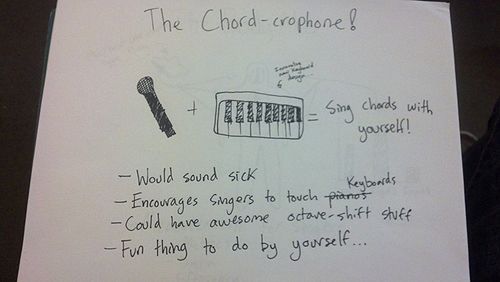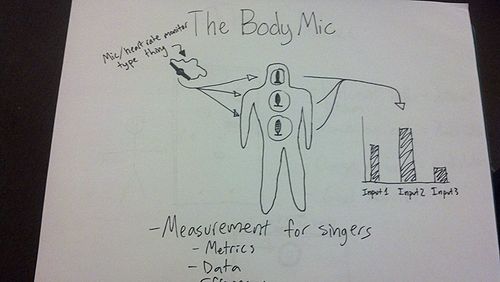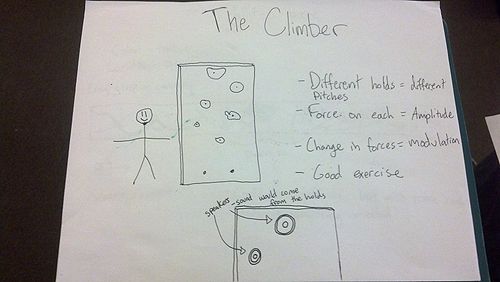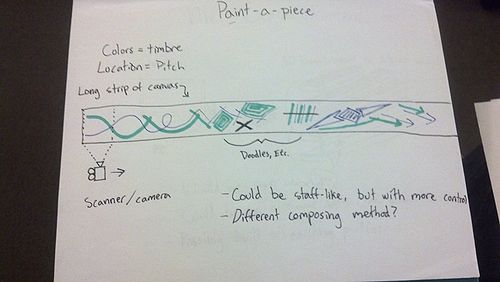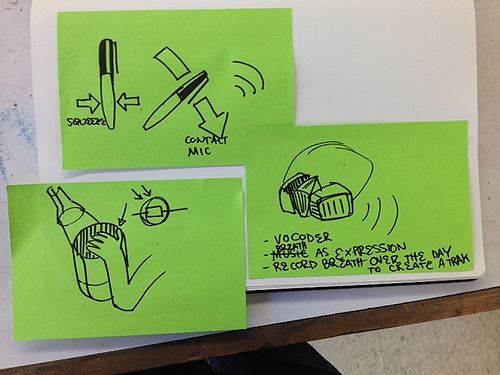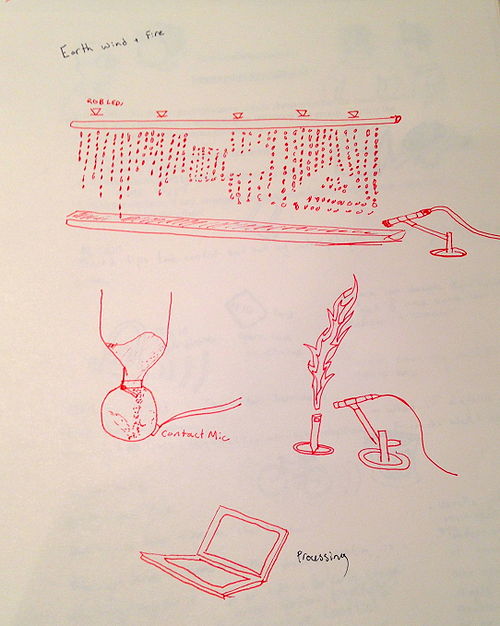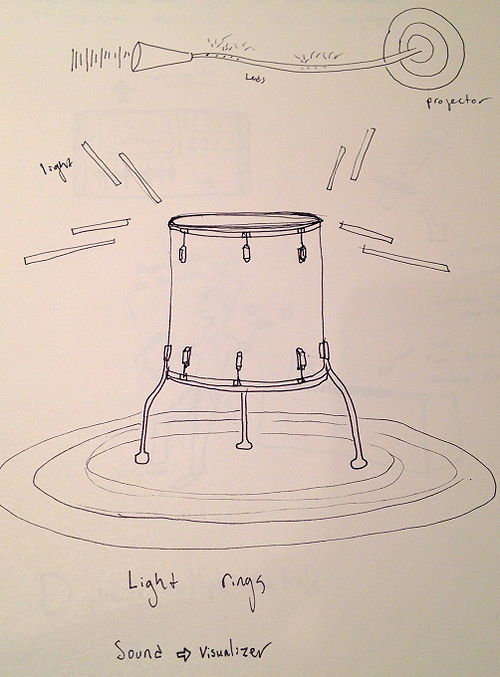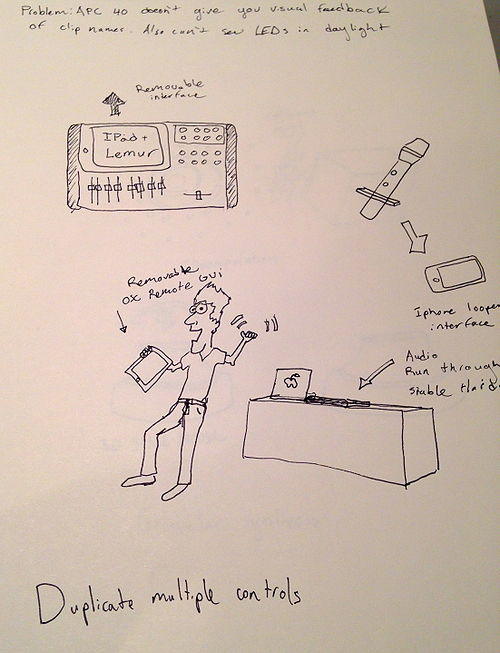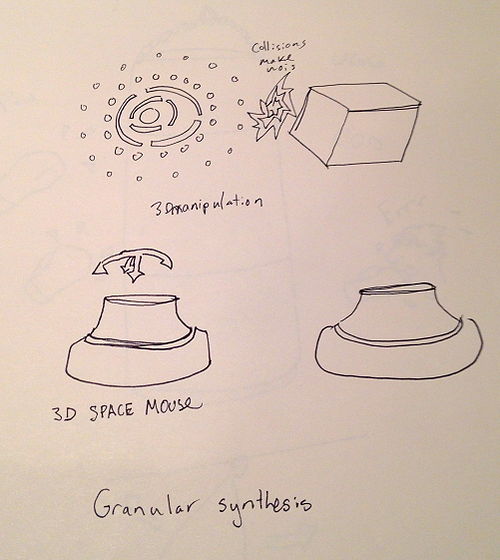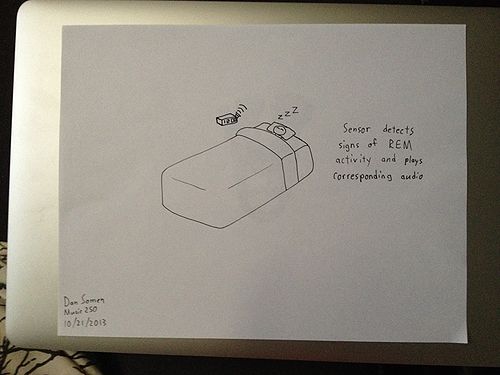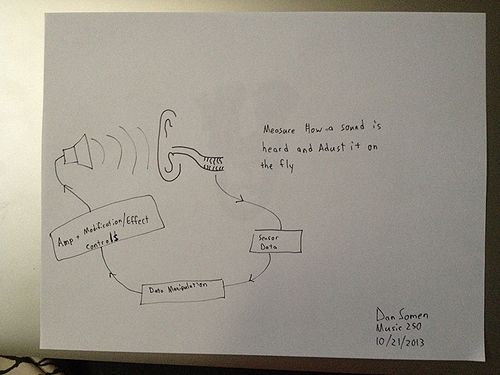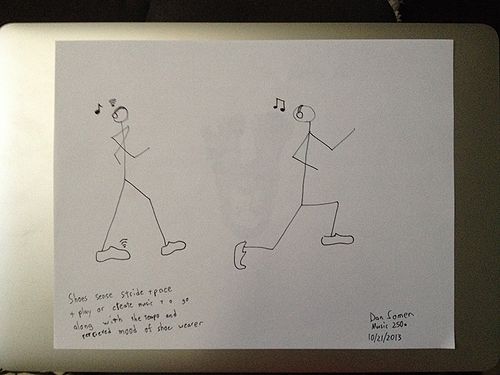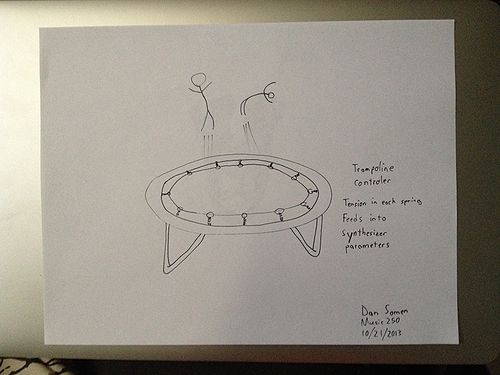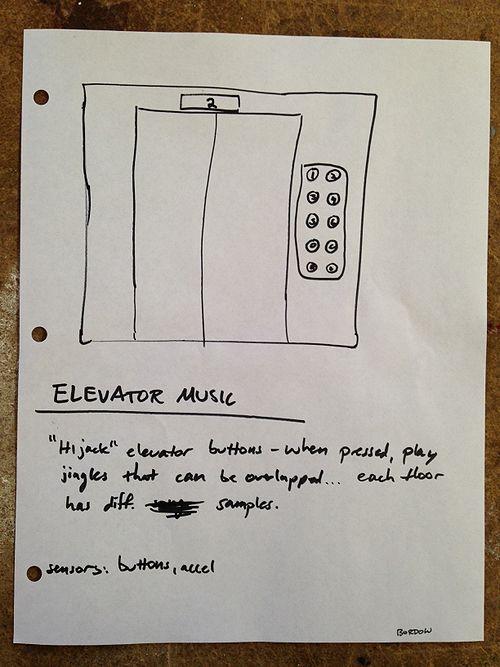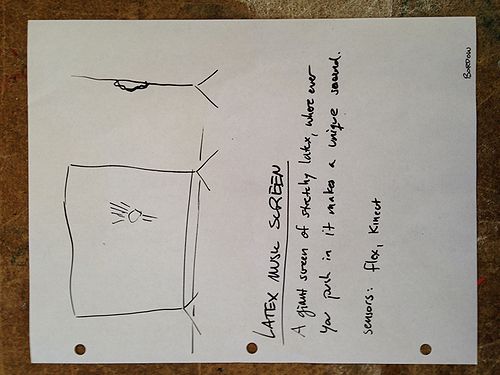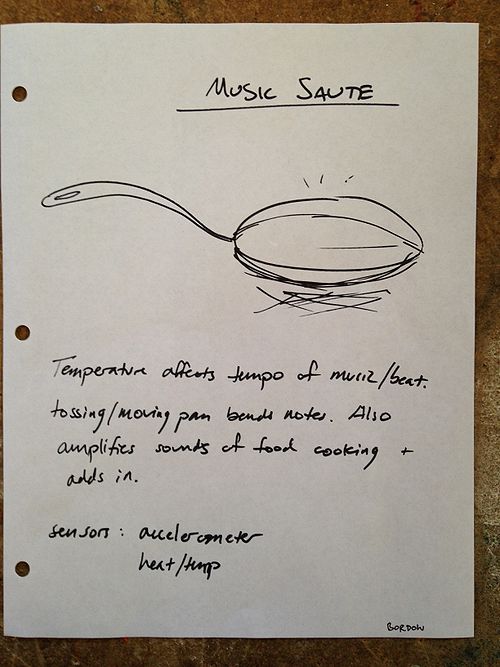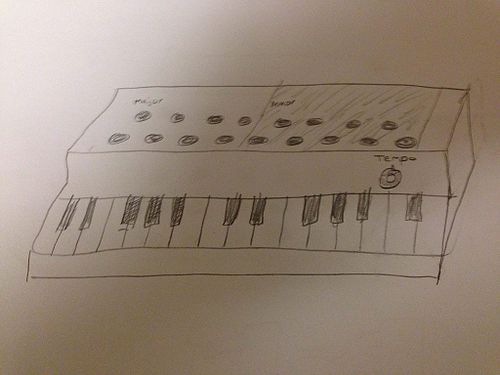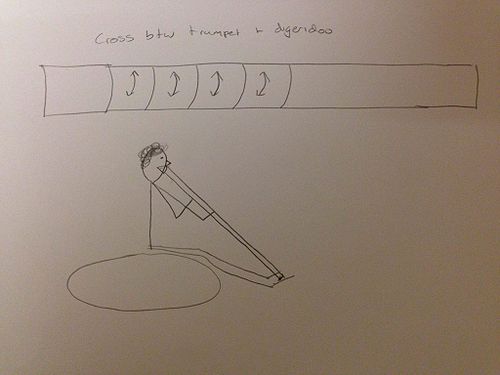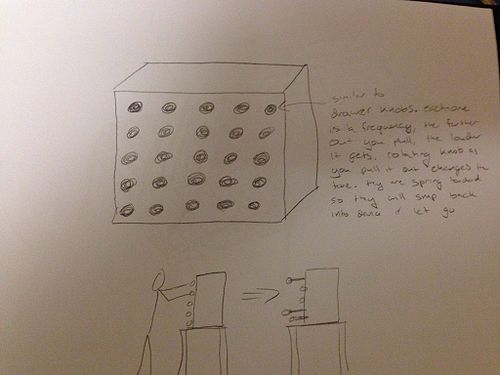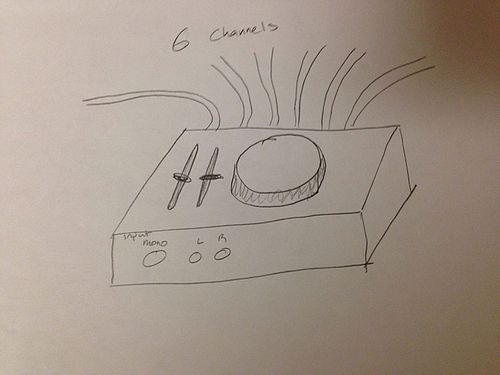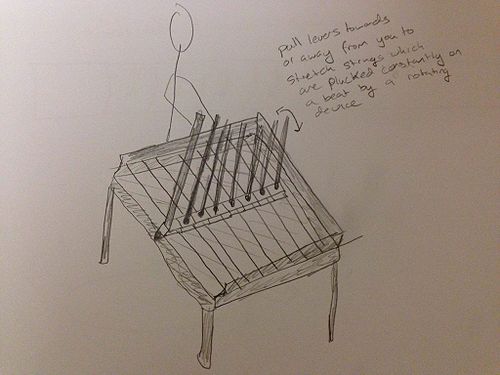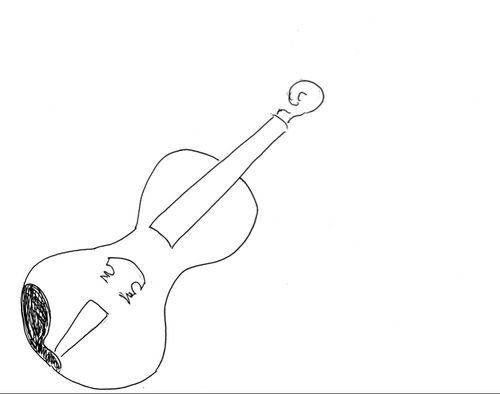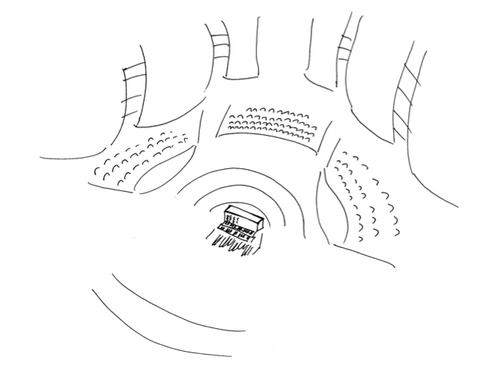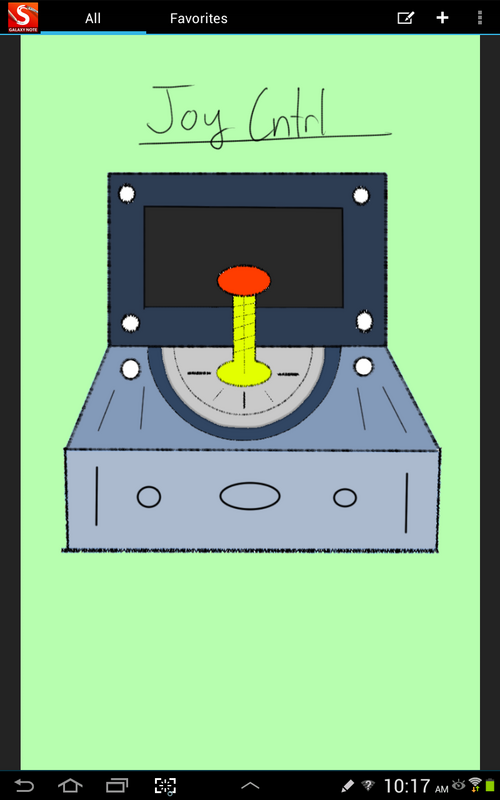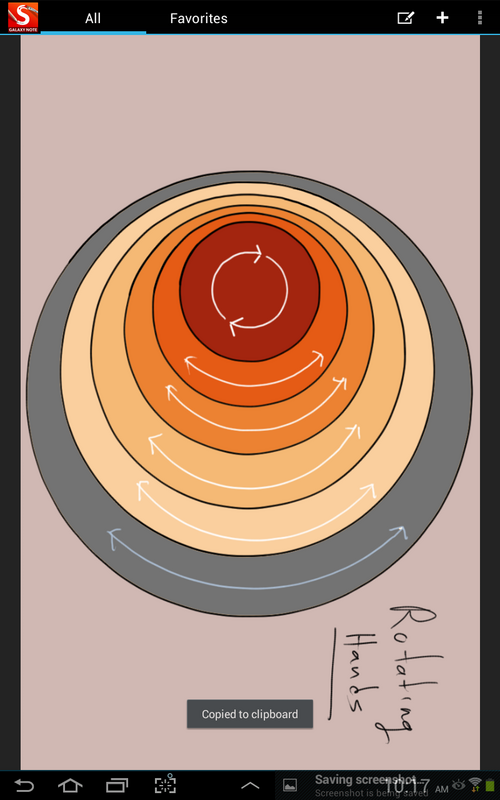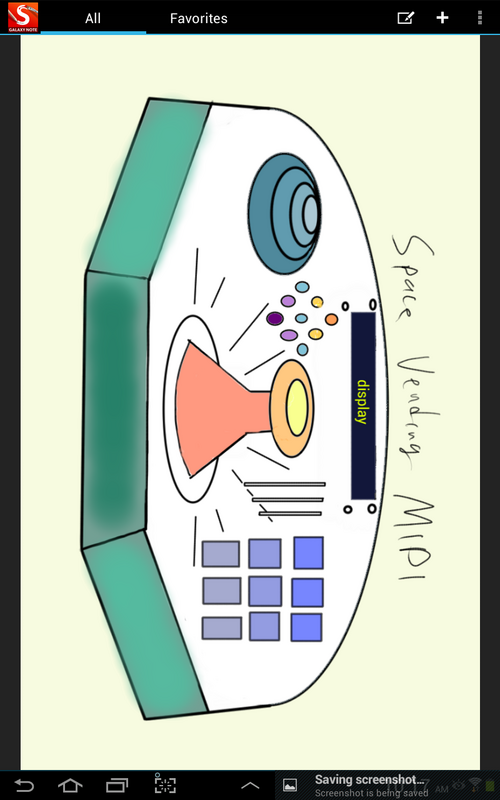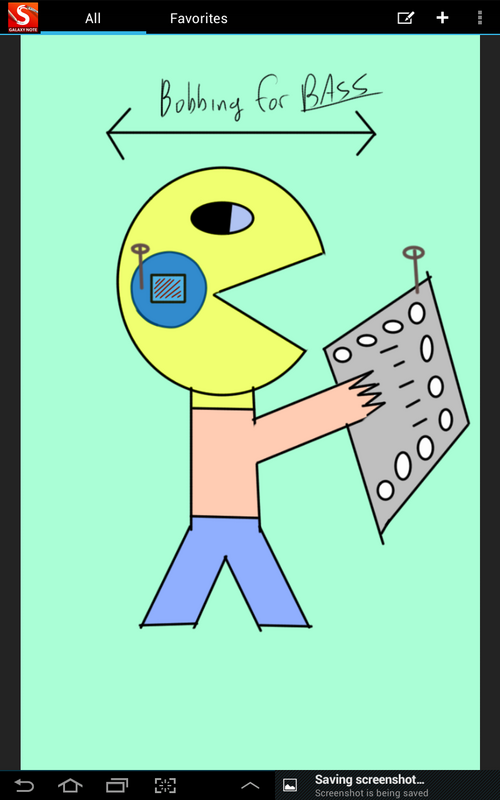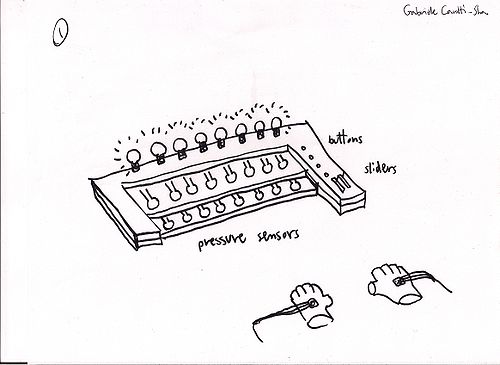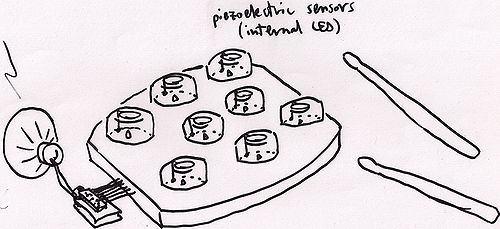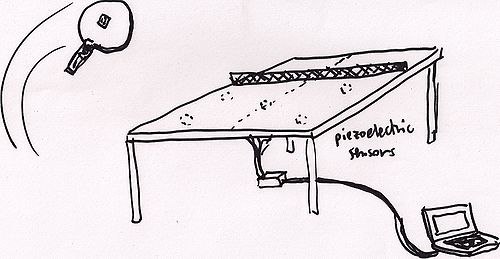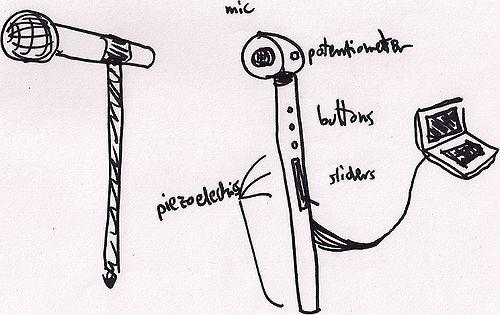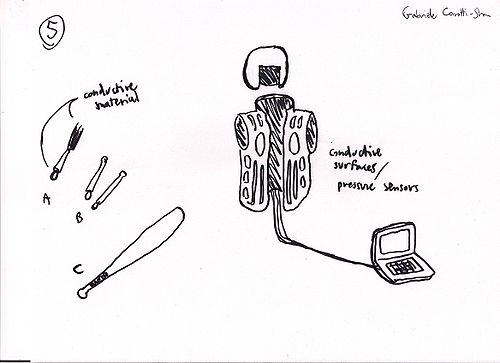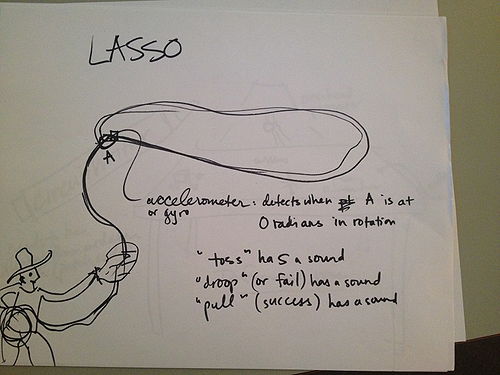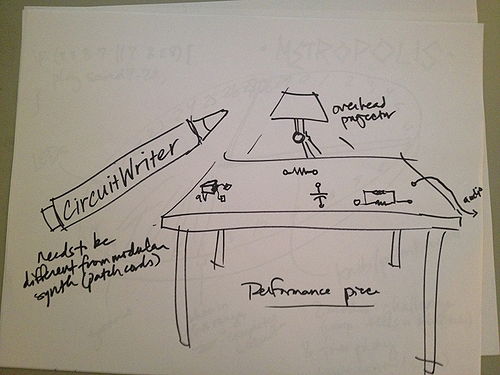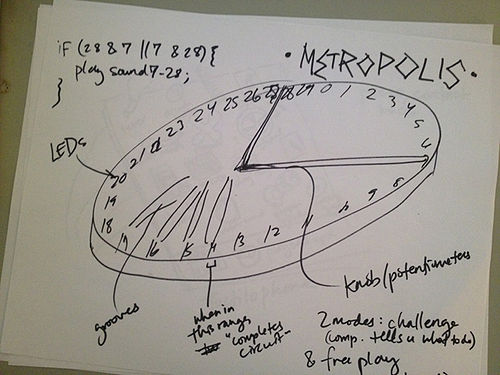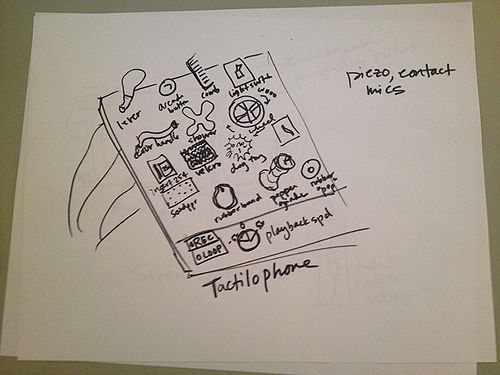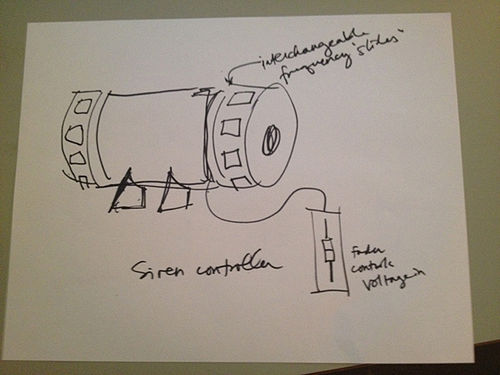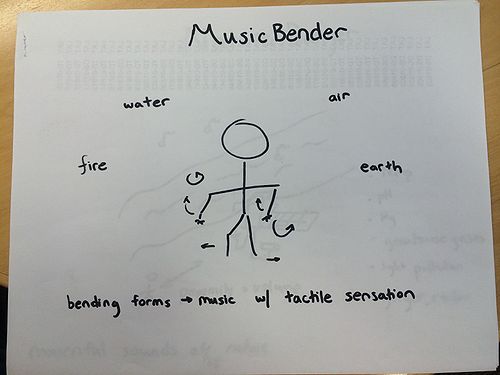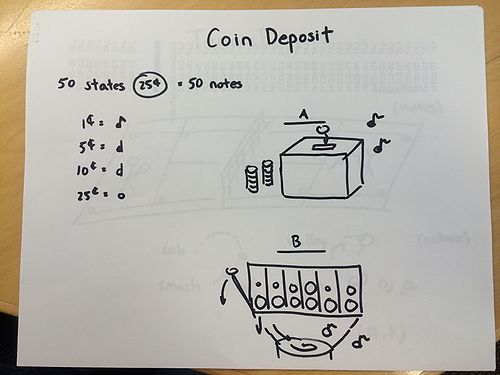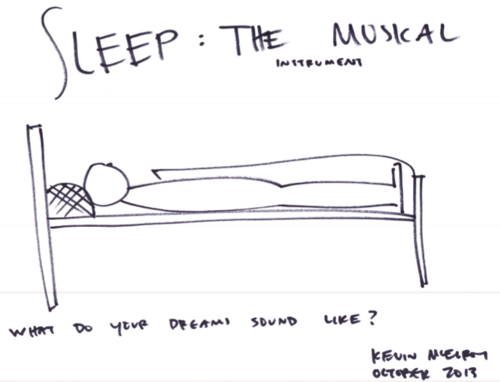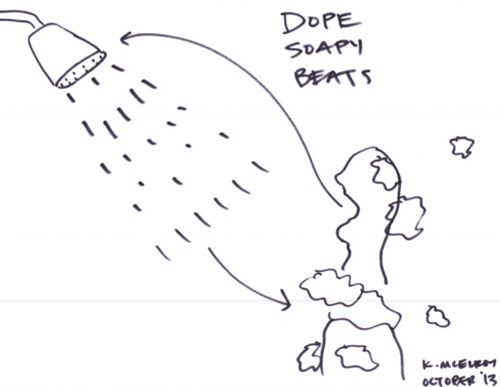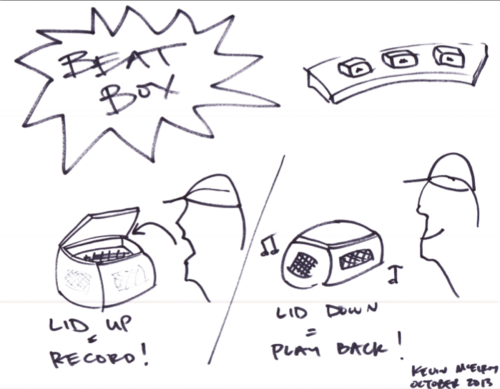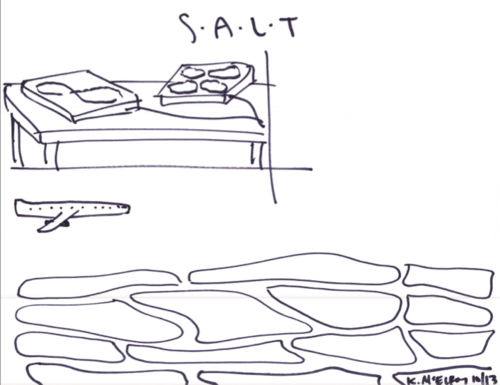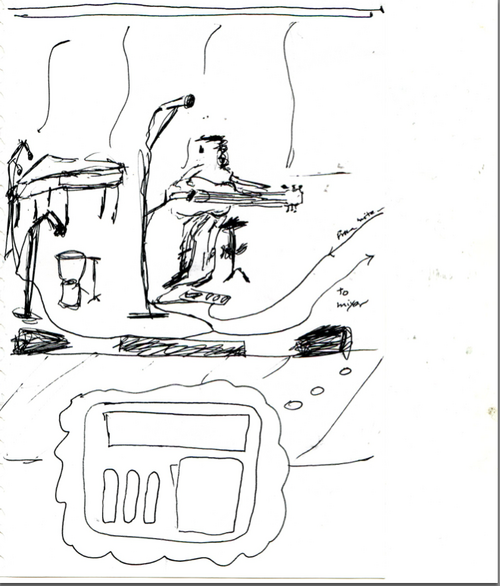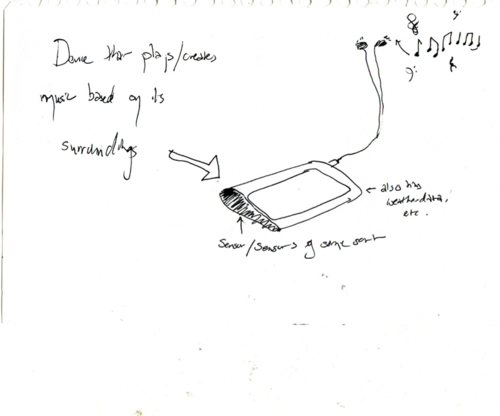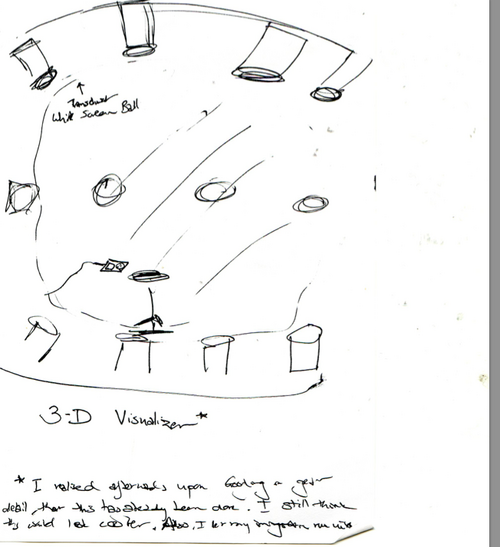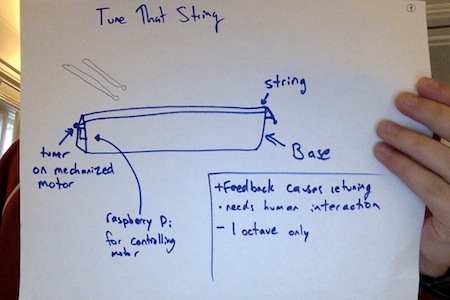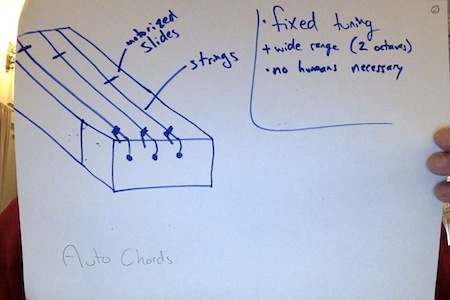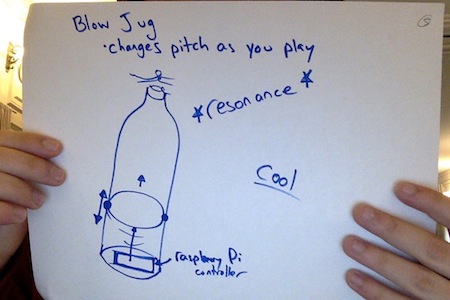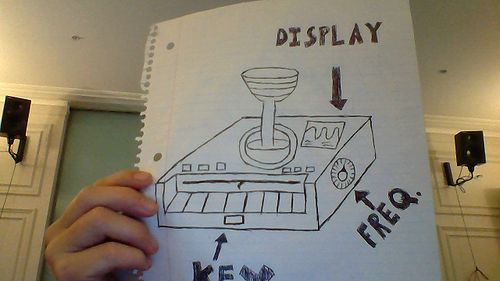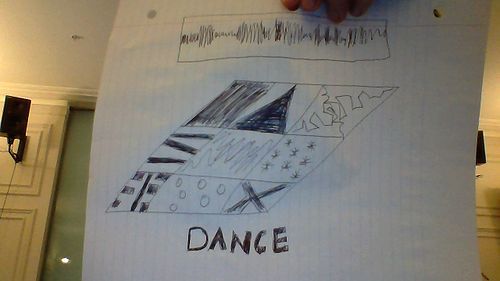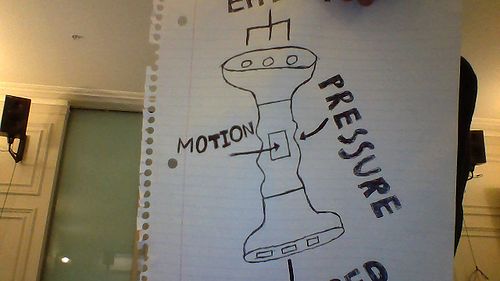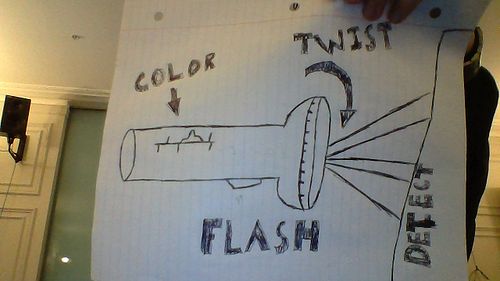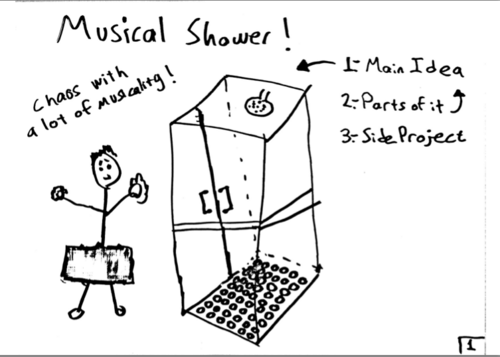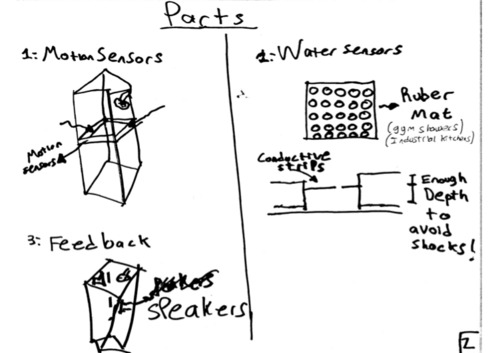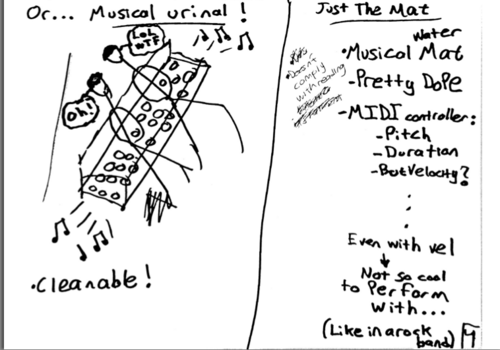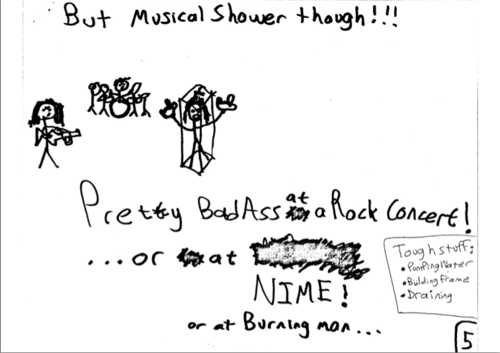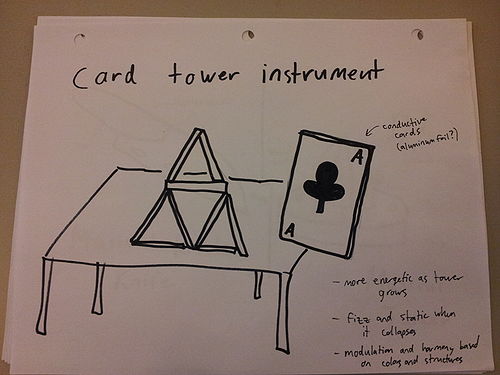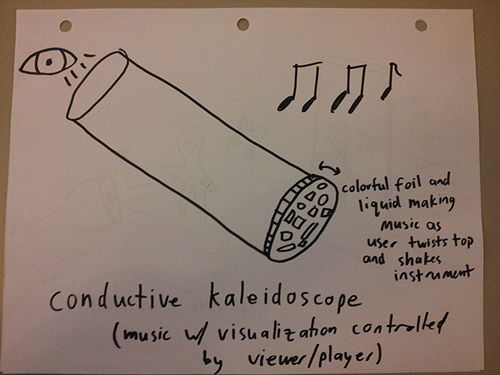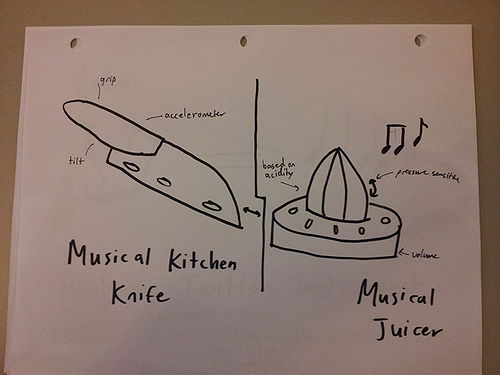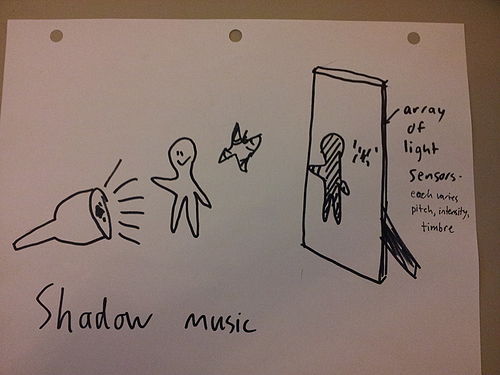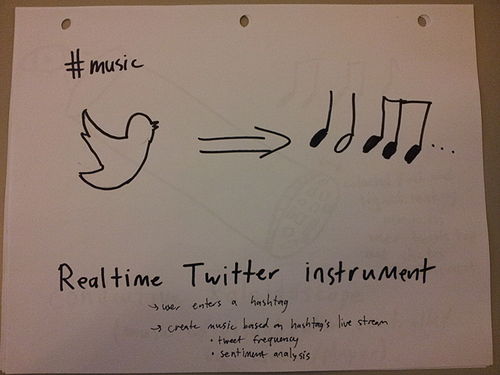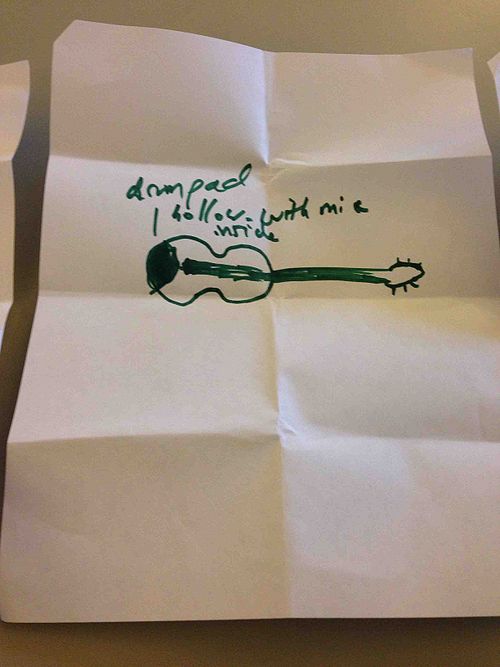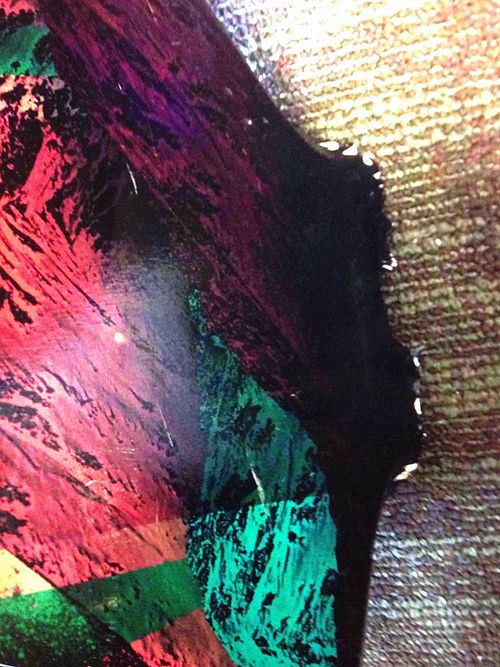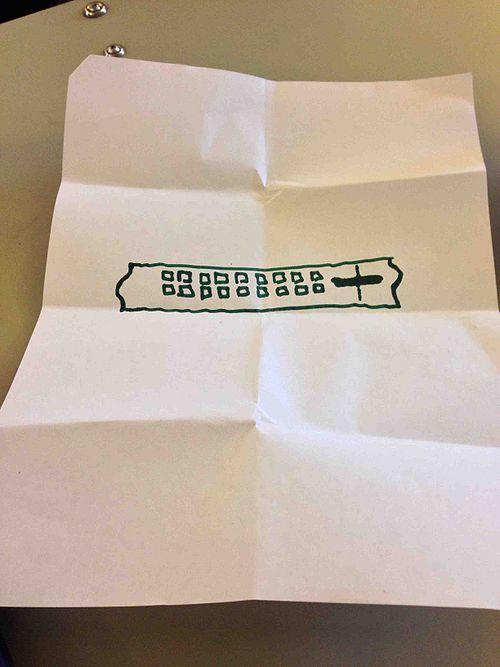250A FirstIdeas 2013
Contents
- 1 Parameters of Musical Instrument/Controller Design
- 2 Danger Zones
- 3 Alon Devorah
- 4 Andrew Forsyth
- 5 Brandon Cheung
- 6 Brie Bunge
- 7 Cooper Newby
- 8 Dan Somen
- 9 David Bordow
- 10 David Grunzweig
- 11 Elliot Kermit-Canfield
- 12 Emily Graber
- 13 Erich Peske
- 14 Gabriele Carotti-Sha
- 15 Gina Collecchia
- 16 Justin Li
- 17 Kevin McElroy
- 18 Kunal Datta
- 19 Micah Arvey
- 20 Michael Mendoza
- 21 Pablo Castellanos Macin
- 22 Robert Shin
- 23 Rooney Pitchford
- 24 Sophia Westwood
- 25 Zach Saraf
Parameters of Musical Instrument/Controller Design
Teaches you something
Jammability/Plays well with others
Coolness for Musician/Garners Attention
Sense of Humor/Surprise
Dance while playing
unique sound
does something the human body can't do
souvenier
awareness augmentuation
Ritual
Ritual/Play
Community
Learnability/Hope
Looks - allignment with purpose
Appropriate resonator
Tactile feel and quality
Tactile feedback for precision
Gesture influenced timbre and dynamics
Precision of notes
Extendability and flexibility
Durability
Ease of Use
Fun
Availability
Context in Daily Life
Rock and Roll
Expressivity
Sense of Wonder
Pressure Sensitivity
Dynamic Range
Musical Range
Good Sensors
Value
Robustness
Control
Affordability
Portability
Modularity
Personalization
Danger Zones
Technology Failure
Moving parts
Temperature/light humidity, noise, electronic field instability
Long metal or long cables
Physics
Feature Creep
One-off parts
Overextension of:
computer power
time
$
skills
==Minimum Viable Product
Need
Want
Nice to have
Alon Devorah
Andrew Forsyth
Research/Comments:
http://en.wikipedia.org/wiki/Vocoder
Research/Comments:
Research/Comments:
Research/Comments:
Research/Comments:
Brandon Cheung
Research/Comments:
I found 2 sort of related papers.
First is a Frequency content of Breath Pressure -- http://www.nime.org/proceedings/2005/nime2005_093.pdf
And then, another project which doesn't use a mask, but does visual based visualization of breathing -- http://www.nime.org/proceedings/2009/nime2009_153.pdf
Research/Comments:
Brie Bunge
Cooper Newby
Research/Comments:
Research/Comments:
Research/Comments:
Research/Comments:
Research/Comments: Space Mouse Driver
Research/Comments:
Dan Somen
Research/Comments:
Research/Comments:
Research/Comments:
Research/Comments:
Research/Comments:
David Bordow
Research/Comments:
Research/Comments:
Research/Comments:
Research/Comments:
Research/Comments:
David Grunzweig
Research/Comments:
Research/Comments:
Research/Comments:
Research/Comments:
Research/Comments:
Elliot Kermit-Canfield
Emily Graber
Research/Comments:
Research/Comments:
Research/Comments:
Research/Comments:
Erich Peske
Research/Comments:
Research/Comments:
Research/Comments:
Research/Comments:
Research/Comments:
Gabriele Carotti-Sha
Research/Comments:
Research/Comments:
Research/Comments:
Research/Comments:
Research/Comments:
Gina Collecchia
Research/Comments:
Research/Comments:
Research/Comments:
Research/Comments:
Research/Comments:
Kevin says:
http://www.ebay.com/itm/VINTAGE-SIREN-HORN-Air-RAID-EMERGENCY-SECURITY-/190937924229 (New York)
http://www.ebay.com/itm/WWII-Vintage-Air-Raid-Tornado-siren-/141095996476 (Iowa)
Light sirens available locally:
http://sfbay.craigslist.org/pen/atq/4113810872.html
http://sfbay.craigslist.org/eby/atd/4086472669.html
Justin Li
Research/Comments:
Research/Comments:
Research/Comments:
Research/Comments:
Research/Comments:
Kevin McElroy
Research/Comments: Orchestra d'Mastication
Research/Comments: Baby Farts!
Research/Comments: Guts
Research/Comments: Sleep: The Musical Instrument
http://www.sleep-tests.co.uk/polysomnography.php
The PSG or polysomnogram, as the test is referred to, measures or monitors many body functions including the eye movements (EOG), brain (EEG), heart rhythm (ECG), skeletal muscle activation (EMG), and breathing or respiratory effort during sleep
Usually at least 11 channels (wires) to the patient's head, takes 1-2 hours to set up.
Of the eleven channels, two are for EEG - to determine if the person is indeed sleeping and in what stage of sleep he/she is at a given time - one channel to measure air flow, one channel each to sense chin and leg movements, two channels to measure REM, one channel each for EKG and oxygen saturation, and one for recording the chest and abdominal wall movements. All these channels are then wired to a computer where it is deciphered into readable attributes and stored for future reference or record. A live video of the sleeping patient is also recorded so that the supervising technician could observe the patient from an adjacent room. The same clips may also be used by the doctor for further diagnosis of the patient. Despite all the wires attached to the patient, interestingly, it has been found that few patients ever have any problems sleeping whilst under observation. Most of them stated they even slept better in the lab than at home.
Research/Comments: Dope Soapy Beats
Research/Comments: Beat Box
Research/Comments: S.A.L.T.
Andy Goldsworthy
Kunal Datta
Research/Comments:
Research/Comments:
Research/Comments:
Research/Comments:
Research/Comments:
Micah Arvey
Research/Comments:
Research/Comments:
Research/Comments:
Research/Comments:
Research/Comments:
Michael Mendoza
Research/Comments:
Research/Comments:
Research/Comments:
Research/Comments:
Research/Comments:
Pablo Castellanos Macin
Research/Comments: Flood detector
Research/Comments:
Research/Comments:
Research/Comments:
Research/Comments: Thermochromic paint pee
Robert Shin
Rooney Pitchford
Sophia Westwood
Research/Comments:
Research/Comments:
Research/Comments:
Research/Comments:
Research/Comments:
Zach Saraf
Research/Comments:
Research/Comments:
Research/Comments:
Research/Comments:
